Scapular Stability In Pole Retrieval
Scapular Stability In Pole Retrieval
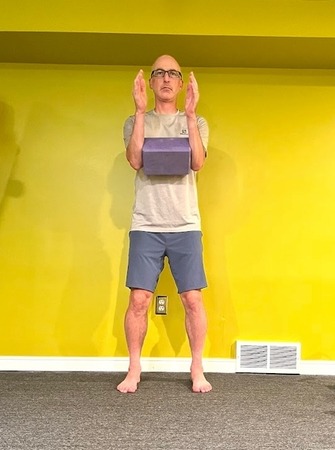
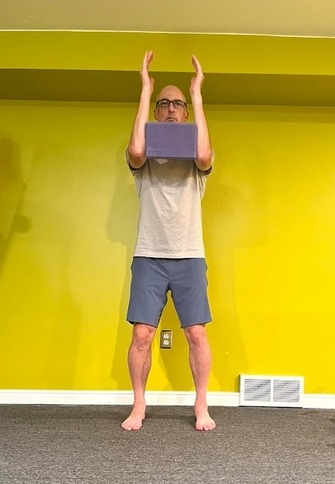
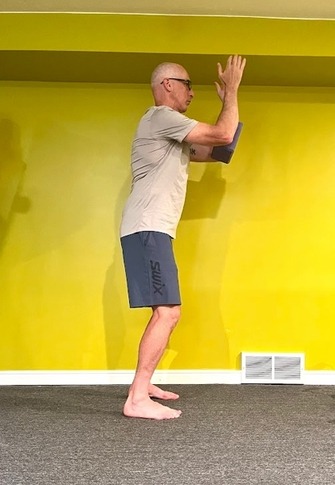
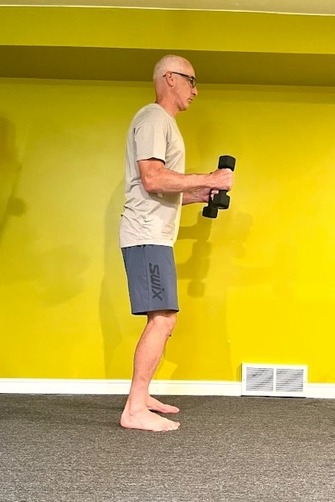
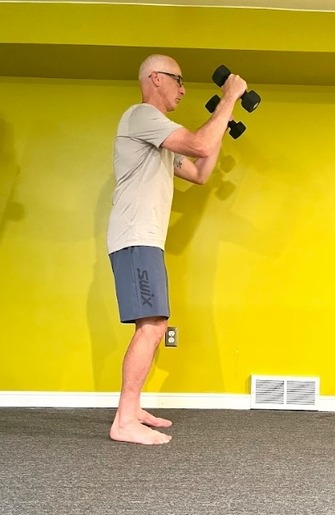
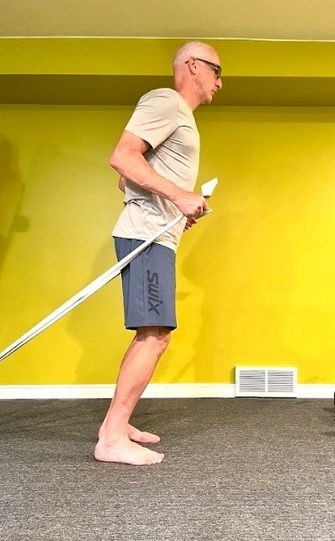
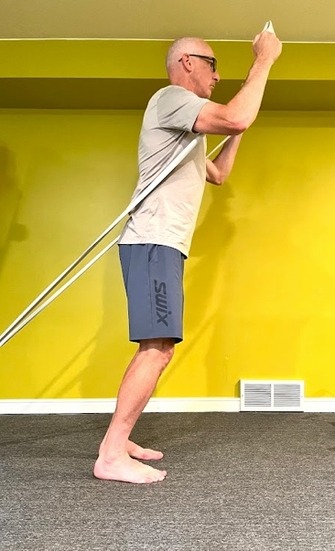
By Ned Dowling
A common technique issue with pole retrieval, both in double pole and skate V2, is “hiking the shoulders.” What does this mean, why does it happen, why does it matter, and what can we do to change it?
What is it?
“Hiking the shoulders” refers to scapular elevation or when your shoulders come up towards your ears. We tend to think of our arm motion as movement at the shoulder joint, or more technically the glenohumeral joint—articulation of the humerus (upper arm bone) on the glenoid of the scapula (shoulder blade). However, the scapula also moves (via the scapulothoracic joint) and helps contribute to the arm’s full range of motion, especially overhead. The combination and coordination of movement at the glenohumeral and scapulothoracic joints is referred to as scapulohumeral rhythm. In very simple terms (biomechanics can get very complicated very quickly), when the arm is raised overhead, the scapula remains still until the shoulder/glenohumeral joint reaches about 90 degrees of motion. Beyond that, the scapula begins to upwardly rotate. Movement of the scapula too soon, or not enough, can limit full range of motion, decrease stability, and potentially lead to pain at the shoulder and/or neck.
Why does it happen?
Early elevation of the scapula is not uncommon. In the orthopaedic world, we hypothesize that this is a contributing factor to a range of musculoskeletal symptoms at the shoulder and neck. It’s further hypothesized that prolonged, slumping posture is a significant factor.
The scapula is attached to the body via the clavicle (collar bone) and a handful of muscles. As with the majority of joints in the body, the scapulothoracic joint gets its stability and coordinates its movement via the co-contraction of muscles pulling in opposite directions. In very, very simple terms, the scapulothoracic joint moves the scapula up (aka elevation), down (depression), in towards the spine (retraction), and away from the spine (protraction). The upper portion of the trapezius muscle runs from the vertebrae of the cervical spine (neck) and base of the skull to the top of the scapula. Its primary action is to elevate the scapula (think shrugs) and to support the scapula against downward forces through the arm (like schlepping that heavy duffle through the airport). However, it also plays a big role in holding the head up, especially when posture gets slumpy. Thus, the theory goes that prolonged, slumpy posture keeps the upper traps so accustomed to working that the muscle kicks in too much and overwhelms the other muscles, causing the scapula to elevate too early.
Why does it matter?
I already alluded to some potential musculoskeletal issues with “hiking the shoulders.” With the upper trapezius attached to the cervical spine, any activation of the muscle will exert load on the neck. Increased repetition or muscle force production will equal increased loads on the structures of the cervical spine. I also mentioned early scapular elevation as a potential contributor to a group of shoulder symptoms referred to as Subacromial Pain Syndrome. This basically means something—muscle, tendon, and/or bursae—underneath the acromion process (the bony bit on the scapula that joins with the clavicle) is irritated and painful. Neither neck pain nor shoulder pain are particularly pleasant.
From a performance perspective, stability is a common theme in ski technique. Newton told us that whenever we push on something it will push back against us. So if we want to optimize that push, we need to be able to resist the subsequent forces pushing back. Any deficiency in stability, or ability to counter those opposing forces, equates to a loss of efficiency, a loss of power, and ultimately a loss of speed. If we are trying to generate an efficient and powerful push through the poles, we’ll want the scapula to be optimally positioned and stabilized. An elevated position is neither of these.
What can we do?
Well, don’t shrug your shoulders! Sometimes, it’s as simple as that. But more often, we need to relearn a movement strategy, which will work best if we start simple and then add complexity—start in the gym and then get on skis.
The first step is basic awareness of the position of the shoulder blades (proprioception is the technical term for the brain/nervous system’s awareness of the body’s position in space).
Optimal position: Neutral up/down (not elevated but not depressed) and slightly protracted. Why protracted when the typical postural cue is to retract the scapulae? This gets back to anatomy and biomechanics, so I’ll try to keep it brief. When the arms are freely moving in space, we call this open kinetic chain movement, and scapulothoracic stability is provided primarily by the middle and lower portions of the trapezius muscle. When the arms are bearing weight or connected to an object that is pushing back (remember Newton?), it's called closed kinetic chain, and the stability is coming mostly from the serratus anterior. Pole retrieval is open chain and poling is closed chain. The theory of scapulohumeral rhythm says the scapula shouldn’t elevate (or upwardly rotate) until the motion at the glenohumeral joint passes 90 degrees. In pole retrieval, we don’t need more than 90 degrees so there’s no reason for the scapula to move upwards. The fore-aft, or relative retraction or protraction, matters less to this 90 degrees of open kinetic chain motion at the glenohumeral joint. However, once the poles hit the snow (or pavement in the summer), the shoulder is now moving in closed kinetic chain where the serratus anterior is the dominant scapular stabilizer. Thus, if we perform pole retrieval in slight scapular protraction, we’ve pre-activated the serratus anterior and have a head start on stability as we apply force through the poles. One step further, this scapular protraction puts some stretch on the latissimus dorsi muscle. Our muscles tend to respond to a pre-stretch with increased force and velocity, which results in more power production (think of the rebound with plyometrics). This is especially good coming from the lats since they are the primary producer of arm power with poling.
Reinforcing Exercises:
Scapular Proprioception: Either sitting or standing, hike your shoulders up towards your ears. Now drop them down away from your ears. Go back and forth a few times. Then relax back to your neutral position. Now, pinch your shoulder blades back towards your spine. Make sure they don’t go up at the same time (watching yourself in a mirror might help). Next, bring your shoulder blades forward. This is going to be the position we’re looking for with pole retrieval; however, it is very common for people to gain what looks like scapular protraction when they’re actually just bending at the upper back/thoracic spine. Again, the mirror might be helpful: watch yourself from the side. You should see movement of the shoulder blades but no motion at the spine. Practice several repetitions in front of the mirror for feedback, do several with your eyes closed, then some more watching yourself in the mirror to see you’ve got it.
Forced Scapular Protraction: Squeeze a yoga block or soccer ball between your elbows and move your arms up to where your upper arm/humerus is about parallel with the floor. You can watch yourself in the mirror for this one too, but I think you’ll find it much harder to hike your shoulders even if you try. Pinching the yoga block will automatically put you in scapular protraction. Do about 15 reps up and down before moving to weights or bands.



Weighted Retrieval: With relatively light weights (definitely less than 10lbs) or light resistance bands anchored near the floor behind you, raise your arms like you would in pole retrieval. Except, here we’re going to position the shoulder blades like you did with the yoga block (but the elbows are definitely farther apart like you were skiing) and really focus on keeping them there. You can incorporate this exercise into your strength routine at 2-3 sets of 10x. Remember, the goal of the exercise is to reinforce a movement pattern, not necessarily chasing fatigue--don’t go too heavy on the weights or lose the desired movement pattern.


Heavy Band Retrieval: Once you feel like you’ve got the scapular stability with lighter resistance dialed, try it with heavy bands. The advantage here (other than the increased challenge of maintaining stability) is that you can work on your ski stance at the same time: ankles and knees flexed, forward shin angle, hips forward and high, neutral spine.


